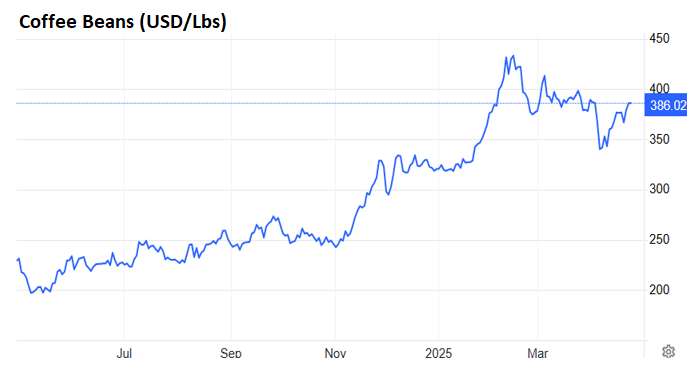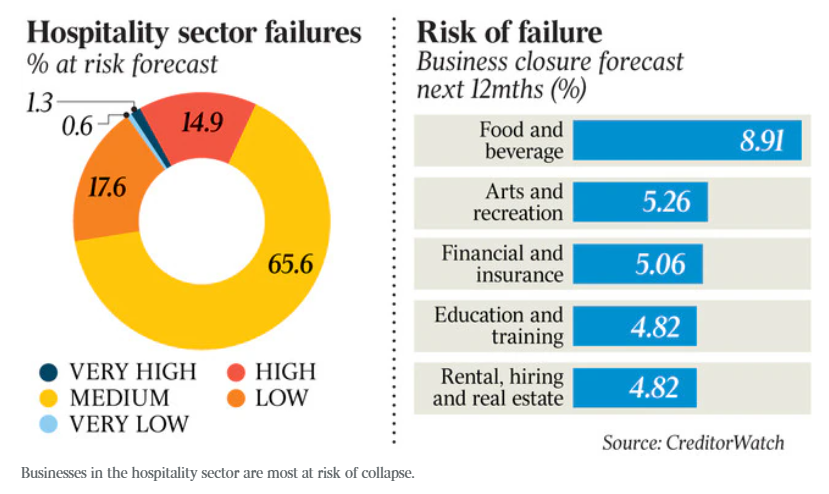I have written about how the explosion in cafe numbers and rampant cost inflation have left the hospitality industry in a precarious position.
When I moved to my suburb of Ashburton, Melbourne, in 2006, only a handful of cafes were operating on my local High Street shopping strip.
Over the following 15 years, the number of cafes operating on High Street surged to more than a dozen.
This number of cafes was not sustainable and did not match consumer demand. While some cafes were busy, the majority struggled for customers.
As a result, High Street Ashburton has seen several cafes close since the pandemic, replaced by empty shop fronts.
High Street Ashburton’s experience has been replicated across Australia. The number of cafes, carts, and hole-in-the-wall coffee shops in Australia has increased dramatically over the last two decades, mainly due to the belief that our daily addiction to gourmet coffee is unbreakable.
According to IBIS World, more than 27,000 cafes and coffee shops exist in Australia. Competition is fierce, with multiple cafes often operating at the same locations.
Andrew Low, CEO of Coffee Supreme, which supplies roasted beans to over 600 cafes around Australia, highlighted the industry’s key problem in an interview with ABC News.
“When I first got into coffee 15 years ago, there were probably about 5,000 speciality or independent cafes. While our love of coffee has increased over that time, it’s not five times bigger”, Low said.
“The average cafe used to do about 500 cups a day. Now it’s doing 300 cups a day. At the same time, the costs have doubled, so the margins in cafes have shrunk on average”.
“Supply is outstripping demand, and that’s making everyone lose a bit of money. We have too many cafes to support the needs”, he says.
The reality is that Australia’s cafes are facing a perfect storm of excess supply, rising costs, and falling consumer demand amid cost-of-living pressures.

Global coffee bean prices have more than doubled over the past year in Australian dollar terms. The costs of rent, food ingredients, energy, labour, insurance, and other items have also risen strongly, pressuring cafe margins.
Cafes have responded by lifting their prices. It is not uncommon to pay $20 or more for a basic avocado on toast or more than $30 for a Big Breakfast.
Articles regularly claim that Australians pay too little for coffee and that the price would soon rise to $7 or more.
However, such cost inflation will merely result in demand destruction.
Few Australians are willing or able to pay such high prices. As a result, many consumers will go without, make coffee at home, or purchase cheaper machine-made coffee from a convenience store or service station.
“If customers choose to change their coffee habits, this might threaten the Australian coffee industry, which employs almost 70,000 people, as of 2023″, warned RMIT logistics and supply chain management Professor Vinh Thai.
Reflecting the above forces, the rate of cafe insolvencies has surged.
Recent data from the Australian Securities and Investments Commission (ASIC) showed that hospitality insolvencies increased by over 70% annually, with 1,312 hospitality businesses going under compared to 771 in the previous year.
CreditorWatch warned that around one out of every six (16.2%) hospitality businesses were at high risk of failing because of high interest rates, rising rents, increased living costs, and the long-term effects of the pandemic.
CreditorWatch forecast that one in 11 (9%) of food and beverage businesses would likely close in 2025.

“Hospitality in general is being almost attacked from multiple directions”, CreditorWatch chief executive Patrick Coghlan said.
“They feel the reduction in discretionary spend more than any other industry, they are constantly dealing with rising costs they can’t pass on in the same way that business services, or construction, or most other industries can”.
“There’s only so much a consumer will pay for a cup of coffee or a sandwich, right? That just puts a huge amount of pressure on their margins”, he said.
Suresh Manickam, CEO of Restaurant & Catering Australia (R&CA), added, “We are facing one of the toughest environments for the industry in recent years”.
The upshot is that Australia’s twenty-year cafe boom has ended, with the number of cafes decreasing to meet demand.
Charging $7 for a cup of coffee will merely crush consumer demand even more and hasten the crash.

